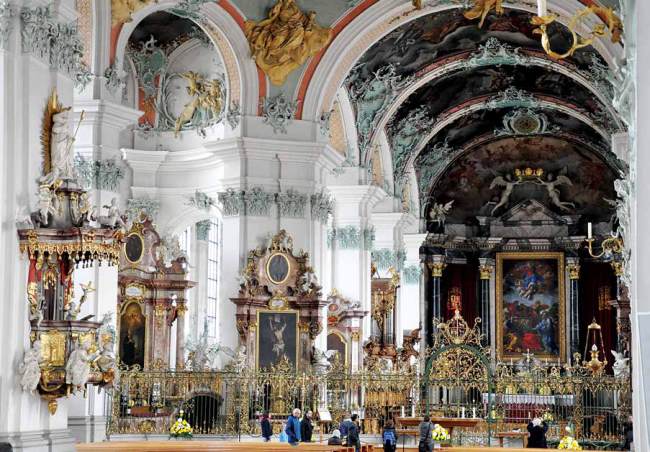Basic HTML Version


(c. 689-c. 759), who named it St. Gallen after the Irish monk. By the
ninth century, St. Gallen’s monastery was recognized as an important
scriptoria, and its
Stifsbibliothek
(library) grew to house more than
160,000 books and manuscripts dating from the 8th to 11th centuries.
Among its most important treasures is the “Plan of St. Gallen,” an
architectural blueprint for the ideal Benedictine monastery of the
Carolingian Empire. As the only surviving architectural drawing
from the 700-year period between the fall of the Roman Empire and
the 13th century, the “Plan of St. Gallen” was meant to counteract
the encroaching Celtic influences being brought to the continent by
British and Irish missionaries. Although no religious complex was ever
built to the exact specifications of the “Plan of St. Gallen,” elements of
its design influenced several great European monasteries.
The magnificent Library of St. Gallen survived the Reformation,
which split the city between Protestant and Catholic. Along with the
Cathedral and other buildings of the Abbey complex, it was named
a UNESCO (United Nations Educational, Scientific, and Cultural
Organization) World Heritage Site in 1983. Just nine years later, the city
of St. Gallen received the prestigious Wakker Prize, awarded by the Swiss
Heritage Society for the preservation of its architectural treasures, which
include half-timbered public buildings, exterior painted murals, and
protective stone walls surrounding parts of the Abbey compound.
ART
&
ARCHITECTURE
At first glance, the 18th-century interior of St. Gallen Cathedral seems
a chaotic confection of Baroque excess, but its similarity to a wedding
cake fades as one’s eye focuses on artistic details. The overall scheme
of white interior festooned with green stucco decoration was led by the
sculptor Christian Wenzinger and includes Rococo side altars, ceiling
frescoes depicting paradise painted by Johann Wentzinger and Josef
Wannenmacher, and an elaborate pulpit mounted on the left wall designed
by Anton Dirr. The centerpiece of the Classical-style high altar by Josef
Simon Moosbrugger is a 1645 painting by Giovanni Francesco Romanelli
depicting a popular subject,
Assumption of the Virgin.
114
winter
|
spr ing

